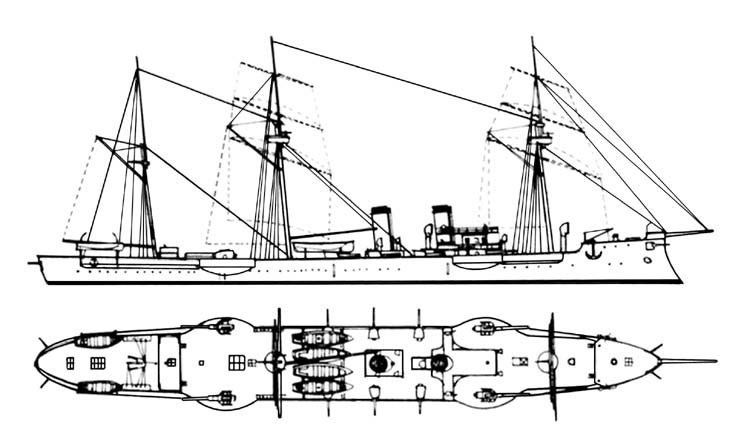Name Unebi Laid down 17 May 1884 Struck 19 October 1887 Launched 6 April 1886 | Ordered 1883 Fiscal Year Completed October 1886 Construction started 17 May 1884 Length 98 m | |
 | ||
Fate Disappeared December 1886 | ||
Unebi (畝傍) was a protected cruiser of the Imperial Japanese Navy, designed and built in France by Forges et Chantiers de la Gironde. Unebi was named after Mount Unebi in Nara prefecture, located near the ancient capital of Asuka. Per Meiji period State Shinto mythology, this mountain was home to Japan's first Emperor, Jimmu Tenno.
Contents
Background
During the period of increasing tension with the Empire of China prior to the First Sino-Japanese War, the development of the protected cruiser was of great interest to Japan because of its high speed, powerful armament, armour protection and relatively low cost, especially since the Imperial Japanese Navy lacked the resources at the time to purchase modern pre-dreadnought battleships necessary to counter the Chinese Beiyang Fleet. During the tenure of Naval Minister Kawamura Sumiyoshi, three vessels were ordered: Naniwa and Takachiho from the Armstrong Whitworth shipyards in England, and (for political purposes), Unebi from the Forges et Chantiers de la Gironde yards of France.
Design
Compared with the Naniwa-class cruisers, Unebi was a slightly older design, which included a full barque rigging with three masts for auxiliary sail propulsion. The design utilised a relatively small displacement in a narrow hull with a disproportionately huge amount of armament.
Service record
Just three months after commissioning, in December 1886, en route from France to Japan with a French captain, Unebi disappeared without a trace somewhere in the South China Sea between Singapore and Yokohama. No survivors and no wreckage were ever found, and theories on its mysterious disappearance have led to numerous novels and works of speculative fiction; the prevailing theory was that the design was top-heavy due to its excessive armament and was unstable in rough weather.
Unebi was officially declared lost with all hands and stricken from the navy list on 19 October 1887. Unebi is the only case of a ship vanishing without a trace in the annals of the Imperial Japanese Navy. A memorial monument to the missing crew of Unebi is located at Aoyama Cemetery in Tokyo.
The Japanese government cancelled the production of a second vessel per the same design, and received compensation from the French government. The monies went towards production of the cruiser Chiyoda. However, the Imperial Japanese Navy was reluctant to continue working with French shipyards after the Unebi disaster, and placed its order for the French-designed Chiyoda with John Brown & Company in Scotland.
